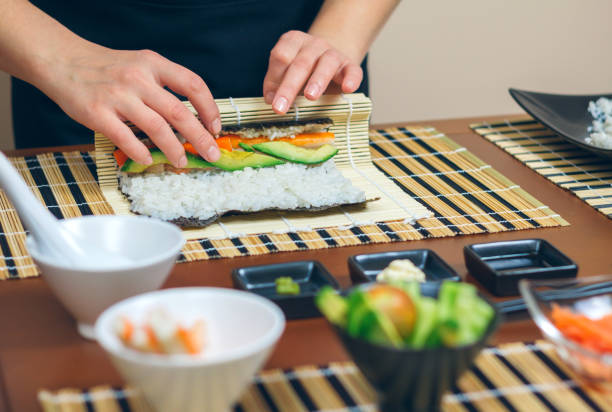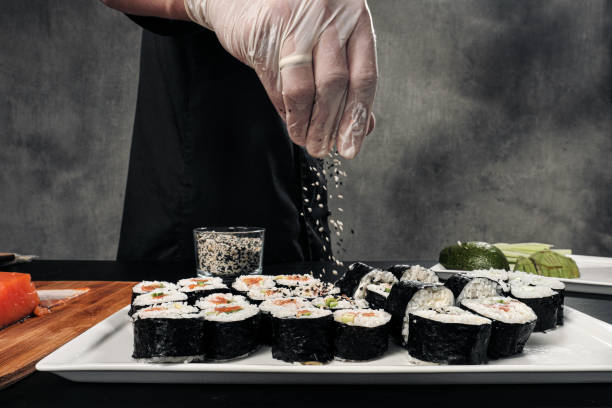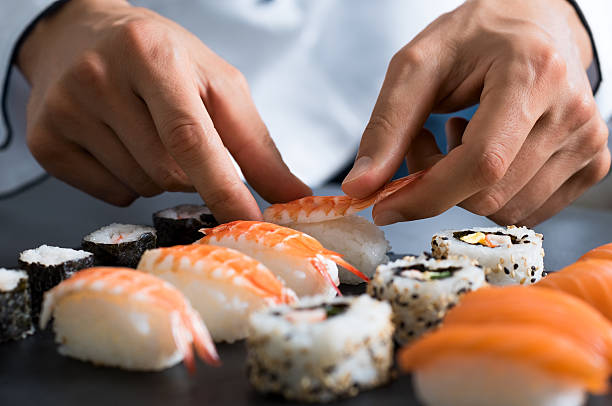Sushi is an art form that has captured the hearts and palates of people worldwide. Its delicate balance of flavors, textures, and aesthetics make it a culinary delight. However, mastering the art of sushi making can be a challenging endeavor, even for experienced chefs. From rice consistency to fish selection, there are several common problems that sushi enthusiasts encounter. In this article, we’ll explore these issues and provide practical solutions to help you perfect your sushi-making skills.
-
Rice Texture and Consistency:
One of the most critical elements of sushi is the rice. Achieving the perfect texture and consistency can be tricky. Common problems include rice that is too sticky, too dry, or unevenly seasoned.
Solution: Properly washing and rinsing the rice before cooking is crucial to remove excess starch. Additionally, ensure you use the correct ratio of water to rice and allow it to steam properly. After cooking, season the rice with a mixture of rice vinegar, sugar, and salt, evenly distributing it while gently folding the rice to avoid mashing it.
-
Fish Quality and Preparation:
The freshness and quality of the fish play a significant role in the overall taste and safety of sushi. Improper handling and preparation can lead to unpleasant flavors and health risks.
Solution: Source your fish from reputable suppliers that prioritize freshness and proper handling. When selecting fish, look for bright, clear eyes, vibrant colors, and a fresh, ocean-like smell. Ensure your cutting tools are sharp to make clean cuts, and always store fish at the appropriate temperature to maintain freshness.

-
Rolling and Shaping:
Achieving perfectly rolled and shaped sushi can be challenging, especially for beginners. Common issues include loose rolls, uneven shapes, and rice sticking to hands and utensils.
Solution: Invest in a good-quality bamboo sushi rolling mat and plastic wrap to help shape and roll the sushi neatly. Keep a bowl of water nearby to wet your hands, preventing rice from sticking. Practice rolling techniques and be patient—precision comes with experience.
-
Knife Skills:
Slicing sushi rolls and fish requires precision and skill. Dull knives and improper techniques can result in ragged edges and uneven slices.
Solution: Invest in high-quality, sharp knives specifically designed for sushi making. Practice proper knife techniques, including holding the knife at the correct angle and using smooth, controlled motions to ensure clean cuts. Regularly sharpen your knives to maintain their edge.

-
Presentation and Garnishes:
The visual appeal of sushi is just as important as its taste. Poor presentation and lack of garnishes can detract from the overall dining experience.
Solution: Take the time to carefully arrange your sushi on the plate, considering color contrast and balance. Garnish with traditional accompaniments such as pickled ginger, wasabi, and soy sauce. Get creative with additional garnishes like sesame seeds, thinly sliced vegetables, or edible flowers to enhance visual appeal.

Mastering the art of sushi making takes time, patience, and practice. By addressing common problems with rice, fish, rolling techniques, knife skills, and presentation, you can elevate your sushi-making game to new heights. Remember, perfection may be elusive, but the journey of continuous improvement is what makes sushi making both challenging and rewarding. So, roll up your sleeves, sharpen your knives, and embark on a culinary adventure that celebrates the beauty and deliciousness of sushi.











Leave a Reply